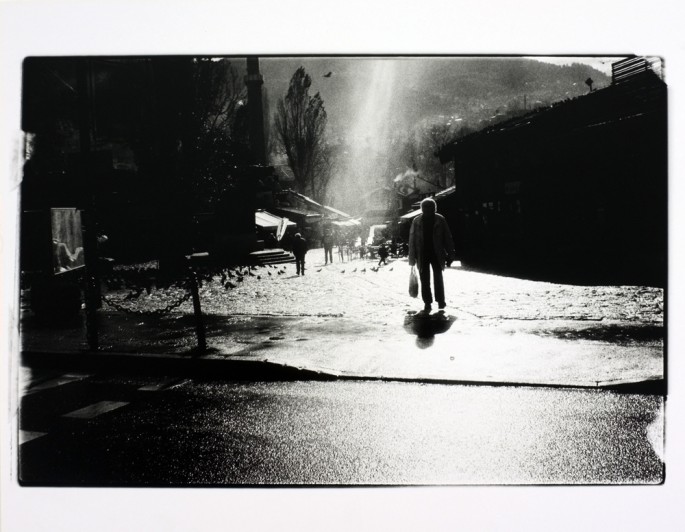Baščaršija, Sarajevo
Sunlight blazes the Baščaršija square in Sarajevo – focused light fast consuming itself, perpetually igniting and choking the burgeoning hope. This has been the case for the last twenty years since the Dayton peace treaty officially ended the war. The treaty not only sealed ethnic lines of demarcation which still prove to be rather dense (the Republica Srpska is predominantly Serbian, the Federation of Bosnia and Herzegovina is predominantly Bosniak and Croatian). It also created a hugely inflated governmental structure that comes up with three presidents, eleven prime ministers, and more than 150 ministers. The state machine absorbs 50 % of total public expenditure. While the average income is 420 Euros, state officials earn up to ten times as much. The heavy-weight bureaucratic framework, which was created with international assistance, continues to drag itself along while blocking any progress within the country.
Die gleißende Sonne auf dem Baščaršija-Platz in Sarajevo. Das gebündelte Licht verbrennt schnell, entfacht und nimmt die immer wieder aufkeimende Hoffnung. Das geschieht seit zwanzig Jahren, seit der Friedensvertrag von Dayton den Krieg beendete. Jener besiegelte die ethnischen Demarkationslinien (mehrheitlich Serben in der Republika Srpska sowie Bosniaken und Kroaten in der Föderation BiH) zwischen jenen heute wenig Austausch besteht, schaffte einen aufgeblähten Staatsapparat mit drei Präsidenten, elf Premierministern und über 150 Ministern. Der Staat verschlingt 50 Prozent der Staatsausgaben. Das Durchschnittseinkommen beträgt 420 Euro, Staatsangestellte verdienen das Zehnfache. Der mit internationaler Hilfe geschaffene Staatsrahmen schleppt sich weiter, kostet und verhindert jeden Fortschritt.
